Growing raspberries in your garden is a delightful experience, offering both a bountiful harvest and a beautiful landscape addition.
As an avid gardener who adores berry plants, I find raspberries to be among the most rewarding fruits to grow. Their sweet and tart flavors, combined with the joy of picking berries right from your backyard, make them a favorite for many gardeners.
In this article, we’ll explore the benefits of growing raspberries, discuss some of my favorite varieties, and offer essential care tips to help you successfully cultivate these delightful fruits.
Benefits of Growing Raspberries
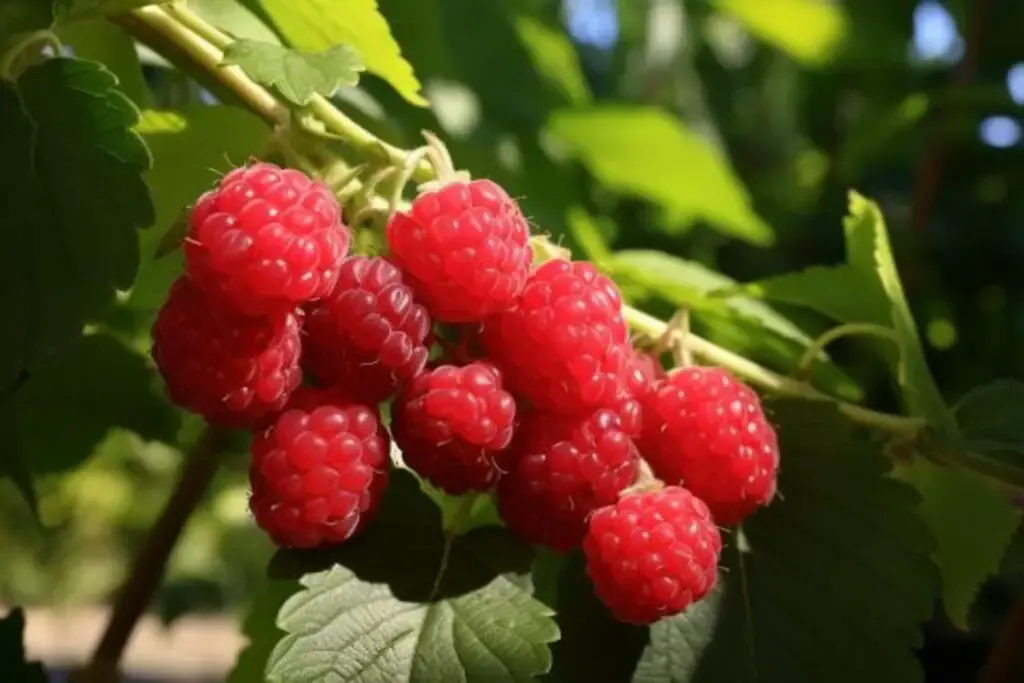
1. Health Benefits
Raspberries are packed with vitamins, antioxidants, and fiber, making them a healthy addition to any diet. Growing them at home ensures you have a fresh, organic supply of these nutritious fruits, free from pesticides and additives.
2. Economical
Store-bought raspberries can be expensive, especially when out of season. Growing your own can save you money while providing a steady supply throughout the harvesting season.
3. Versatility in the Garden
Raspberry plants can serve multiple purposes in your garden. They can be grown as decorative hedges, and provide habitat for beneficial insects, and their perennial nature means you’ll enjoy their fruits year after year with proper care.
My Favorite Raspberry Varieties
Raspberry varieties can vary greatly in flavor, color, and growth habits.
Here are three varieties that I have found to be particularly enjoyable and rewarding to grow:
1. Heritage (Red Raspberry)
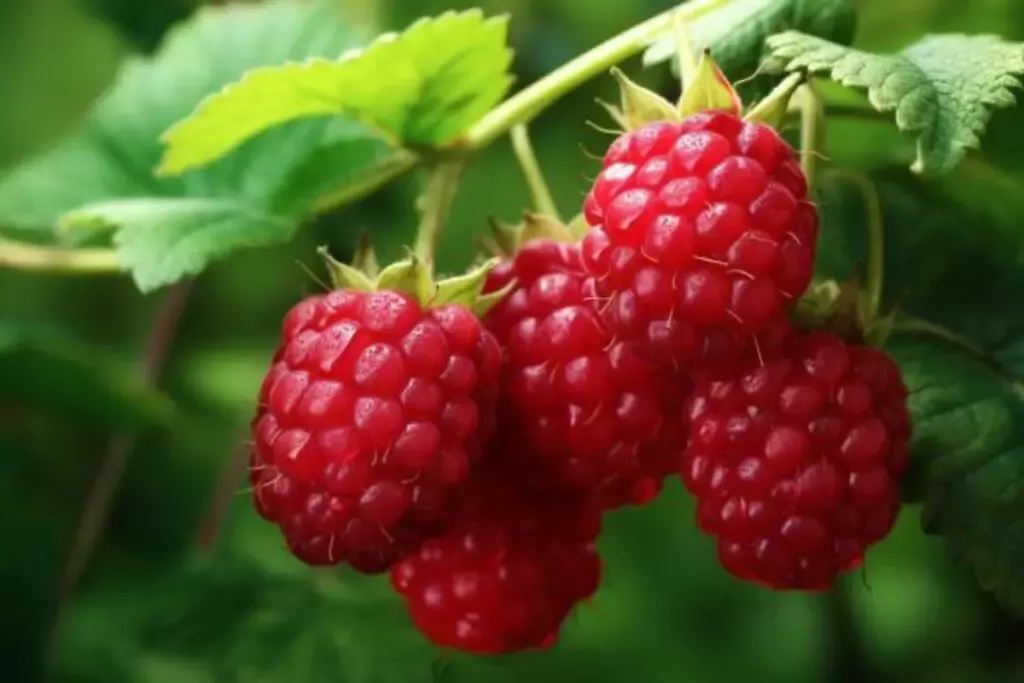
This is an excellent variety for beginners. It’s a hardy, everbearing plant that produces sweet, flavorful berries.
Heritage raspberries are known for their robustness and disease resistance, making them a reliable choice for most gardens.
2. Golden Raspberry (Fall Gold)
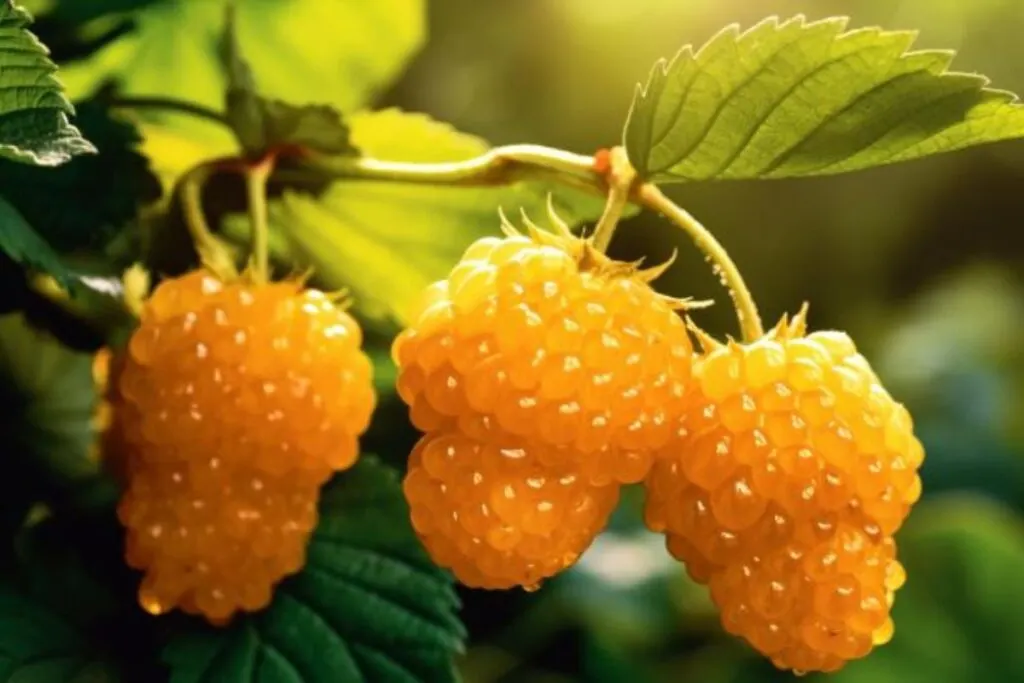
For something a bit different, try the Fall Gold variety. These unique raspberries have a sweet, mild flavor and an eye-catching golden color.
They’re as easy to grow as the traditional red varieties and can add a splash of color to your garden.
3. Black Raspberry (Blackhawk)
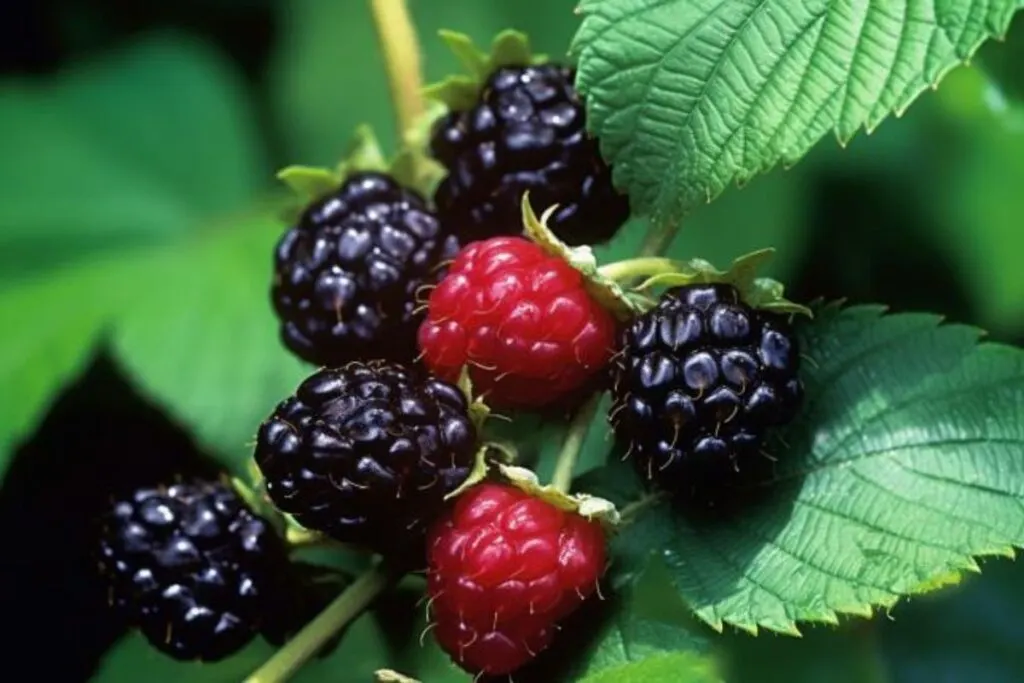
Black raspberries are known for their rich flavor and nutritional value. The Blackhawk variety is particularly noteworthy for its high yields and disease resistance.
Keep in mind, that black raspberries require a bit more care than red or gold varieties, but the reward is a uniquely flavored, deeply colored berry.
Raspberry Care
Proper care and attention are key to cultivating a thriving raspberry patch. Raspberries, with their distinct flavors and generous yields, can be a gardener’s delight when their needs are met.
Let’s delve into the essentials of raspberry care, including planting, light requirements, soil conditions, water needs, temperature and humidity preferences, and fertilization tips.
Planting
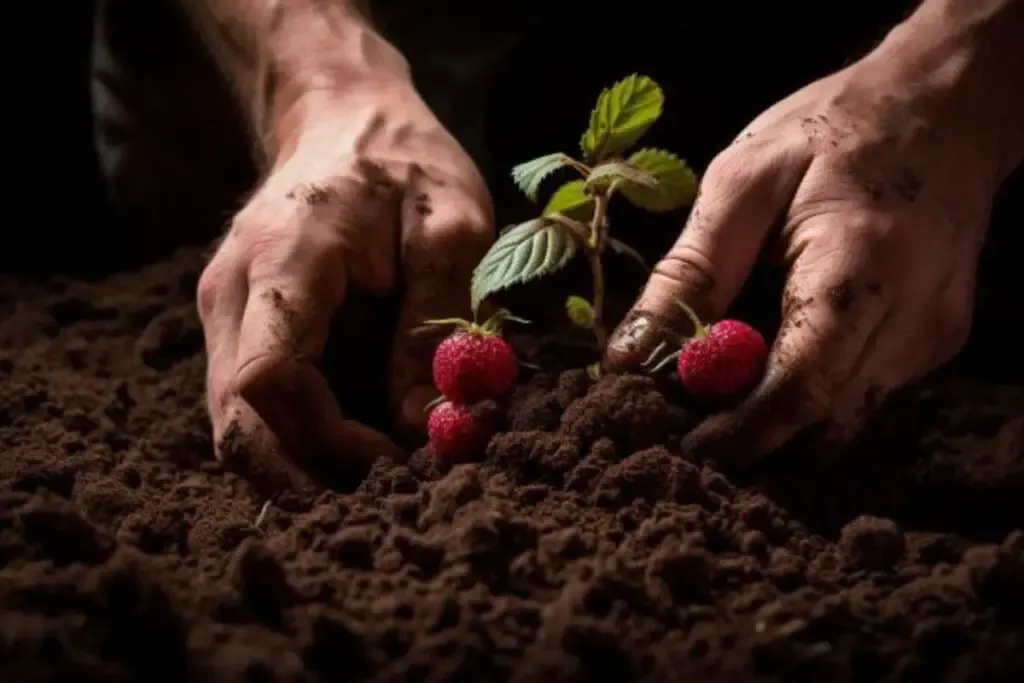
When planting raspberries, timing and location are crucial. Early spring is the best time to plant bare-root raspberry canes.
Choose a sunny spot in your garden, as raspberries require full sun to produce the best fruit. Plant the canes in rows, spacing them about 18 inches apart in the row, with 6 feet between rows.
This allows enough room for the plants to spread and for you to easily access them for harvesting and maintenance.
Light
Raspberries need full sun, at least 6-8 hours a day, to thrive and produce a good crop. A sunny spot is essential for healthy growth and fruit development.
Insufficient sunlight can lead to poor fruiting and increased susceptibility to diseases.
Soil
These plants prefer well-draining soil rich in organic matter. The ideal soil pH for raspberries is slightly acidic to neutral, around 5.5 to 6.5.
Before planting, it’s beneficial to work compost or aged manure into the soil to improve its fertility and structure.
Water
Raspberries require consistent moisture, especially during fruiting. Water the plants deeply once a week, providing more frequent watering during dry spells.
It’s important to avoid overwatering or allowing the soil to become waterlogged, as this can lead to root rot.
Temperature and Humidity
Raspberries generally do well in moderate temperatures and can tolerate a range of climate conditions. However, they don’t fare well in extremely hot and humid environments.
In regions with hot summers, providing some afternoon shade can be beneficial.
Fertilizer
Feed raspberry plants in early spring with a balanced fertilizer or well-rotted manure. Avoid high-nitrogen fertilizers, as they can promote excessive leaf growth at the expense of fruit production.
An additional feeding after pruning may be beneficial, especially if your soil is less fertile.
Harvesting Raspberries
Harvesting raspberries is a rewarding experience that requires a gentle touch. Ripe raspberries come off the plant easily, so they should be picked regularly to prevent overripening.
The best time to harvest is in the morning when the berries are cool. Gently tug on the berries; if they don’t come off easily, they aren’t ready yet.
Frequent harvesting also encourages the plant to produce more fruit.
Pruning
Pruning is an essential part of raspberry care. For summer-fruiting varieties, prune the canes that have borne fruit immediately after harvesting by cutting them back to ground level.
Leave the new canes, as they will produce next year’s fruit. For everbearing varieties, which produce two crops a year, cut all canes back to ground level in late winter for a single, more substantial fall crop.
Propagating
Raspberries are typically propagated through division or by taking cuttings. To propagate by division, separate new shoots from the mother plant along with their roots and replant them.
For cuttings, take a piece of a raspberry cane in late summer or early fall and plant it where you want new raspberries to grow. This is a simple and effective way to expand your raspberry patch.
How to Grow Raspberries From Seed
Growing raspberries from seed is a more challenging and time-consuming process. The seeds need to be stratified (chilled) for several weeks before planting.
Sow the stratified seeds in a container with a seed-starting mix and keep them moist. Germination can take several weeks.
However, most gardeners prefer to buy raspberry canes or plants, as they are easier to establish and bear fruit sooner.
Growing in Pots
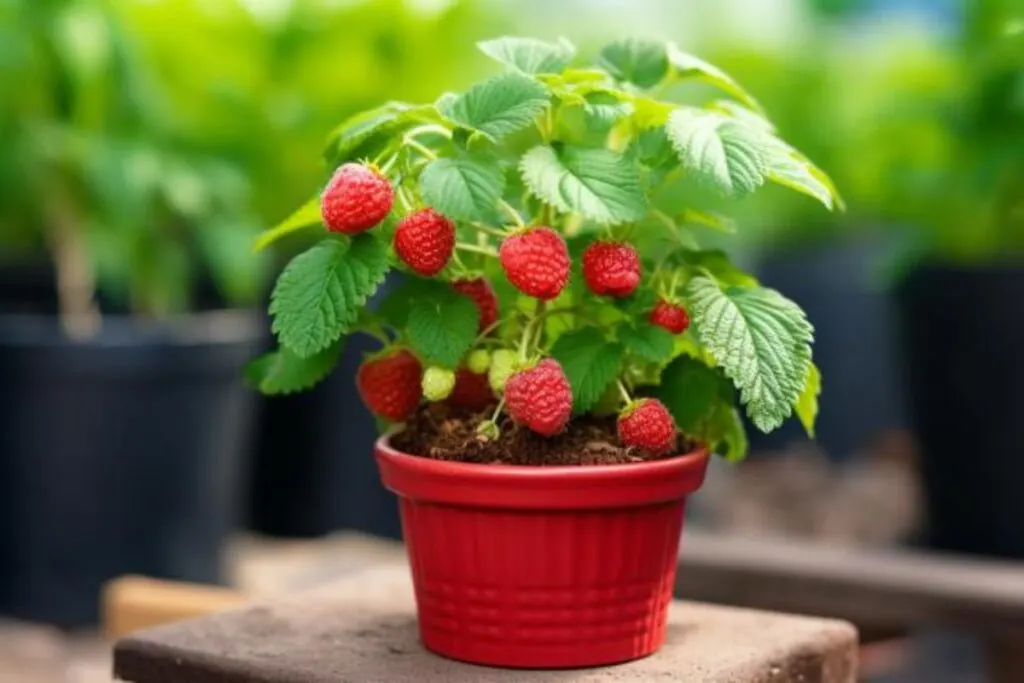
Raspberries can be grown in pots, especially dwarf or bush varieties. Choose a large container with good drainage holes, and use a well-draining potting mix.
Provide a trellis or support for the canes to grow on. Potted raspberries require more frequent watering than those in the ground and may need additional feeding.
Overwintering
Overwintering raspberry plants is an important step in ensuring their longevity and productivity, especially in colder climates.
For summer-fruiting raspberries, after pruning, mulch around the base of the plants with straw or wood chips to protect the roots from freezing temperatures.
For everbearing varieties, a heavier mulch after the fall harvest can help protect the canes that will bear next year’s early summer fruit. In regions with harsh winters, you may also consider using burlap or row covers for added protection.
Transplanting
Transplanting raspberries is best done in early spring or late fall when the plants are dormant. This minimizes stress and allows the plants to establish in their new location before the growing season begins.
When transplanting, ensure to keep as much of the root system intact as possible and water the plants well after transplanting. It’s also a good opportunity to divide the plants if they have become too crowded.
Common Pests & Diseases
Raspberries can be susceptible to various pests and diseases. Common pests include raspberry beetles, aphids, and spider mites.
These can usually be controlled with insecticidal soaps or natural predators like ladybugs. Diseases such as powdery mildew, root rot, and raspberry cane blight are also common.
Proper planting techniques, good air circulation, and avoiding overhead watering can help prevent these issues.
Growing raspberries in your garden can be a truly enriching experience. Not only do these plants provide delicious fruits, but they also add beauty to your garden space.
With the right care, you can enjoy fresh raspberries year after year, turning your garden into a delightful haven of taste and beauty.
Remember, the key to successful raspberry growing lies in regular care and embracing the unique challenges and rewards that come with gardening.

